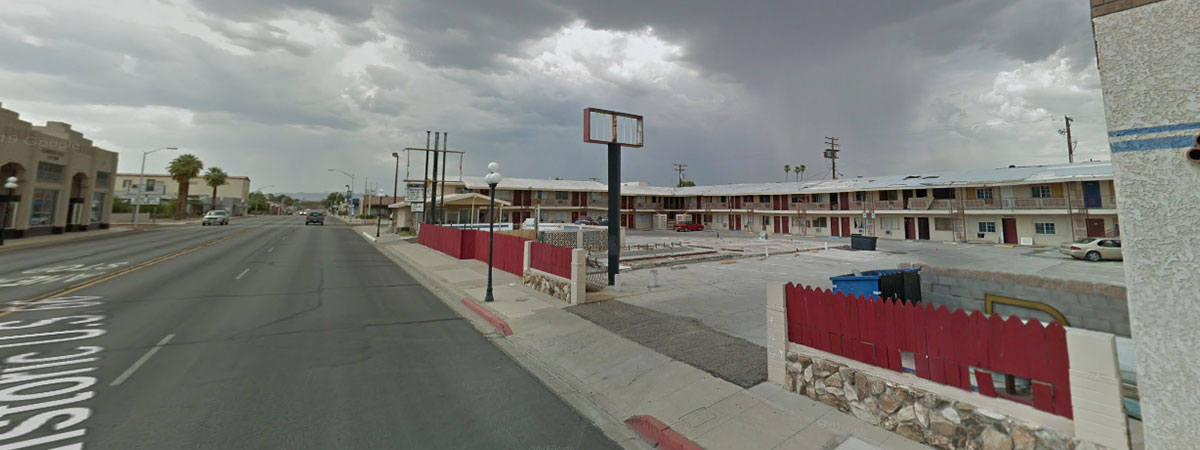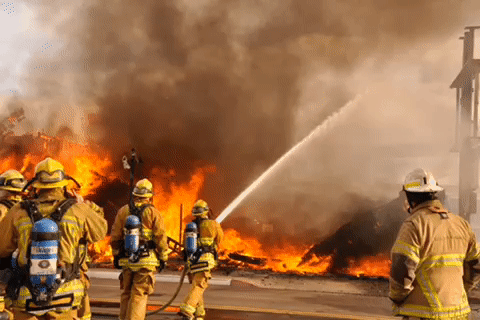Nuisance Abatement Provides Valuable Training for Southern California Firefighters
In both northern and southern California, California Receivership Group has worked with local fire departments to arrange firefighter training at nuisance properties prior to demolition. Controlled practice burns are good for both the neighborhood and for firefighters, and these particular properties were found by a court to meet the criteria for demolition. This unique approach fits when a variety of factors exist: the nuisance property is not physically and financially salvageable; the nuisance conditions will not jeopardize the safety of firefighters or neighboring properties; and environmental and weather conditions will not spread the fire beyond a controlled area.
Firefighters have a rare opportunity to respond to a variety of scenarios in a controlled practice burn at a southern California receivership property
If efforts to restore a nuisance property have been exhausted, a controlled burn for fire department training prior to demolition may be a viable option.
Razing a property is not a decision to be taken lightly. At CRG, property demolition is considered after we have examined and exhausted all other feasible options. When demolition is the determined remediation method, a controlled burn prior to structure demolition and property clean-up provides firefighters with the opportunity to sharpen skills and practice responses to many different and atypical scenarios. This doubles the benefit of code enforcement through receivership: it relieves the community of the nuisance property, and it strengthens public safety through hands-on training for firefighters. Plus a controlled burn can actually reduce demolition costs, leaving more funds in the receivership to be distributed to the parties involved, including the property owner and the community that petitioned for a receiver.
The southern California receivership property in question was a motel without heat or running water.
The structure had other hazardous conditions, including structural issues and faulty electrical wiring, and had been closed to the public. The empty building languished, and it wasn't long before vandals and vagrants pushed it into further disrepair.
When CRG was appointed as receiver, we believed there was an opportunity to revive the building to create affordable housing or dedicated housing for nearby railroad workers or community college students. Further investigation revealed this would not be feasible due to the high construction costs to rehabilitate the building and the unwillingness of lenders to fund even a small loan due to economic concerns in the area.
Efforts to market the property as a tourist destination failed and the structure further degraded.
Next, we considered that the location of the receivership property on an historic highway could attract buyers to develop the property into a tourist destination and help boost the local economy. The receivership created a marketing website exclusively for this property and worked to ensure that it was viewed by stakeholders in this area. Unfortunately, it took almost a year to receive a legitimate offer, which subsequently fell through. We persevered with marketing, but a buyer with the capacity to take on the project didn't materialize.
Once Appointed as Receiver, CRG Sees a Project Through to Completion
Not every receivership has a clear direction at first, and there are often twists and turns in a project. A good receiver should not shy away from finding a solution to a difficult situation. Despite the setbacks, CRG stayed with this project—as we have with many other properties where remediation has not been straightforward—to find a resolution and cure the Health and Safety Code violations.


When it Makes Sense to Raze a Nuisance Property
Without a viable option for preserving and rehabilitating the structure, the empty shell was a danger to the surrounding community. Vacant properties, especially properties of this size, are magnets for crime, vagrants, and vandalism. Performing maintenance like cleaning, fencing, and boarding on such properties without a long-term plan is often a waste of resources, akin to putting a Band-Aid on a broken leg. Demolishing a structure to create a vacant lot is not without issues, but in this case, demolition made sense. The structure was in the heart of downtown. As a vacant lot, it would be easier for law enforcement to respond to complications on-site. Without a structure, the property would be less likely to attract criminals because there would be no places to conceal illicit activities. With no other remedy to fix the dangerous structure available, demolition was deemed the best option to abate the Health and Safety Code violations.
The City and County Working with the Receiver and Local Fire Departments Ensured the Success of the Controlled Burn
After the decision was made to demolish the property, discussion with the City led to a plan for a controlled practice burn. Over a period of 4 days in late fall, firefighters practiced a series of smaller controlled burns, culminating in one large controlled burn. Not only were nearby City and County fire departments involved, but firefighters from nearby communities in Arizona and Nevada were also invited to participate in the hands-on training exercises. The exercises included forcible-entry training and ventilation training. The final and largest burn was visible as far out as Mohave Valley in Arizona.













